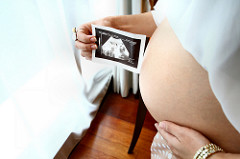Aggregated News

Our 16-year-old daughter, Penny, wakes up to the beeping of her alarm. On her way downstairs, she picks up her iPhone to check her texts. She eats breakfast, gathers her sneakers and pompoms for cheerleading and heads to school. When Penny was diagnosed with Down syndrome a few hours after she was born, I didn’t expect our mornings to feel so ordinary.
When I was pregnant with Penny, I chose to receive a “quad screen,” an elective and noninvasive blood test around 16 weeks that looked for elevated levels of three different hormones and one protein. I soon learned I had a one in 313 chance of having a baby with Down syndrome, higher than expected for a woman my age. We followed up with a detailed ultrasound, which showed a “healthy baby.”
Penny was, indeed, healthy. After she was born, she received a robust eight out of 10 on her Apgar score, a test doctors administer to check the baby’s heart rate and other signs, and came home from the hospital two days later. She also came home with...



